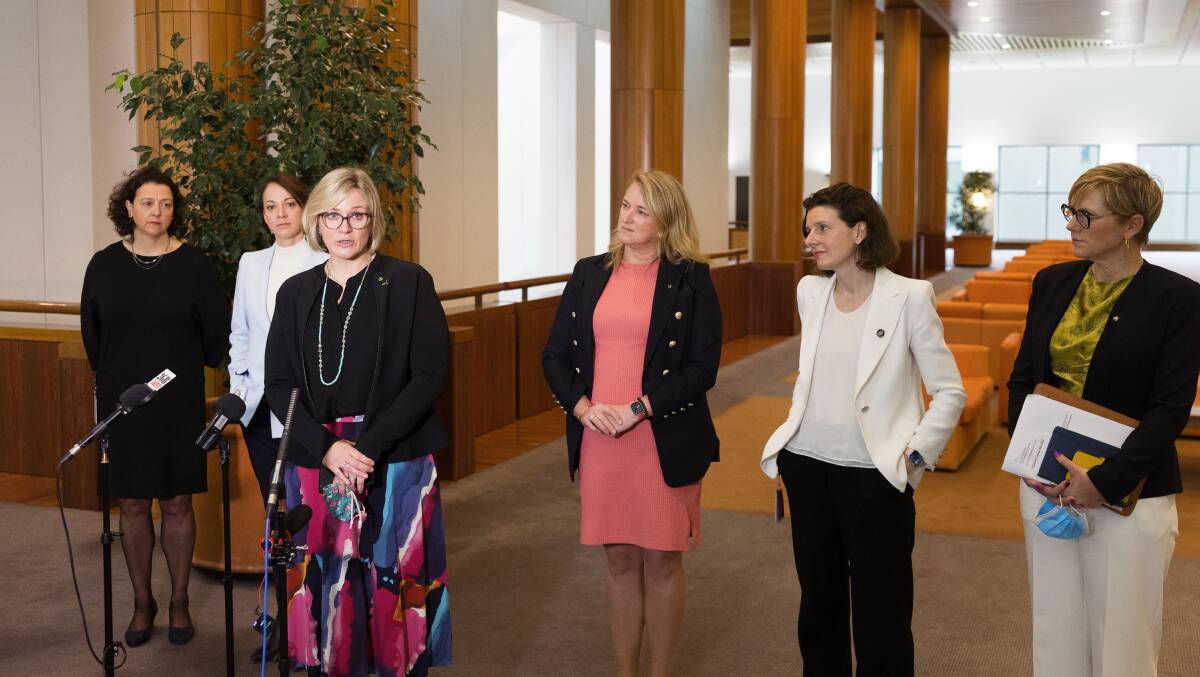I have long been a strong advocate of greater bipartisanship in Australia's two-party system. By bipartisanship I mean "agreement or cooperation between two political parties that usually oppose each other's policies". The latter is a benign description of the my-party-right-or-wrong approach that usually characterises Australia's adversarial relationship between the two major sides of politics.
Subscribe now for unlimited access.
or signup to continue reading
The widespread Australian approach, in Parliament, policy discussions and in election campaigns, is more like hyper-partisanship in which the two sides of party politics engage in a destructive and ultimately unhealthy contest.
In that context advocacy for bipartisanship tries to bring the two sides together through sensible compromises which recognise the middle ground and incorporate the best ideas of both sides of politics. That was always a no-brainer when two parties, Labor and the Coalition, dominated Parliament; bringing these two sides together approximated finding the parliamentary middle ground.
Increasingly the notion of Australia being a two-party system is an incomplete description of Australian democracy. The two parties are no longer dominant in the electorate as the federal election result emphasised. If Australia is no longer a two-party system, then our thinking must change. Bipartisanship, while still valuable, becomes less important. Multi-partisanship becomes a more valuable goal.
The Prime Minister Anthony Albanese and the Leader of the Opposition Peter Dutton are the two most important individuals in Parliament. They represent only about two-thirds of the Australian community on the basis of the Labor and Coalition vote shares. But, despite the improved performance of the Greens and the stunning debut of the teal independents, the two major parties still dominate the House of Representatives and the Senate. Labor can pass its own legislation in the House of Representatives and together the two sides can pass whatever they wish in the Senate.

In this new context bipartisanship is no longer the gold-standard goal that it once was. In the past few could argue against the proposition that the best from the two sides was best for Australia.
Some of those who could demur, like the Australian Democrats, were located between the two major parties and already close to the middle anyway. If one major party refused to negotiate the Democrats could step in to fashion a centrist solution as they did with the GST tax reform during the Howard government.
Big party bipartisanship is now silver or bronze standard rather than gold. Viewed in left-right continuum terms the current situation is that the Greens are on the left of the major parties and the teal independents are also to the left of the big parties on certain major issues, including action on climate change and political integrity.
The logic of this current political situation is that the Greens and the independents should be pulling the centre of gravity in a more progressive multi-party direction. But the old idea of bipartisanship can still work to prevent this if the big parties choose to join together.
The tension between bipartisanship and multi-partisanship will work itself out in the present Parliament on a case-by-case basis; but it won't ever go away. Each of the four or five major groupings will try to make it work for themselves. Each case may be different.
The first big case was climate change and the government's 43 per cent target for cuts in emissions by 2050. The teals and Greens wanted a more ambitious target, while the opposition wanted less and refused to cooperate.
Eventually the teals and the Greens settled for some tightening up of the package by amendments agreed to by the government. But they were unable to budge the government from its 43 per cent target.
The second big case is the current contest over the place of public hearings in the proposed integrity commission. The opposition, initially opposed to any public hearings at all, appears to have joined the government in agreeing to public hearings only in exceptional circumstances.
This could be seen as a victory for traditional bipartisanship, though defining the middle ground in circumstances like this is difficult.
READ MORE:
There is an equally compelling case that if this exceptional-circumstances-only agreement holds then this is a B-grade silver or bronze version of bipartisanship. Surely a multi-party version of bipartisanship should enable the teals and the Greens to join with the government on a more progressive integrity commission. Forget the opposition or pressure them to move much further towards a gold-standard integrity commission.
The integrity commission will be a big test. An even bigger test might be the Voice to Parliament referendum as it unfolds over the next 18 months.
The difference here is that bi- or multi-partisanship will be tested not just in Parliament but in the community.
What will bipartisanship look like on the Voice to Parliament? Will it be a mid-point between the Labor government and the Coalition opposition, or will it also reflect the wider voices of the Greens and teals? Will the wider Indigenous community be satisfied with a Labor-Coalition bipartisanship, or will it want something much more progressive?
These cases demonstrate the highs and lows of bipartisanship as an aspirational goal. Where will the Voice to Parliament fall? Will the eventual package be gold, silver or bronze standard?
The climate change example suggests any outcome fashioned by Labor and the Coalition will fail to reach gold standard and will be an unambitious silver or bronze. The integrity commission will be a further test.
The Voice to Parliament will be an even harder test of the virtue of old-fashioned bipartisanship.
- John Warhurst is an emeritus professor of political science at the Australian National University


